Conveying the charm and traditions of temari uniquely patterned balls
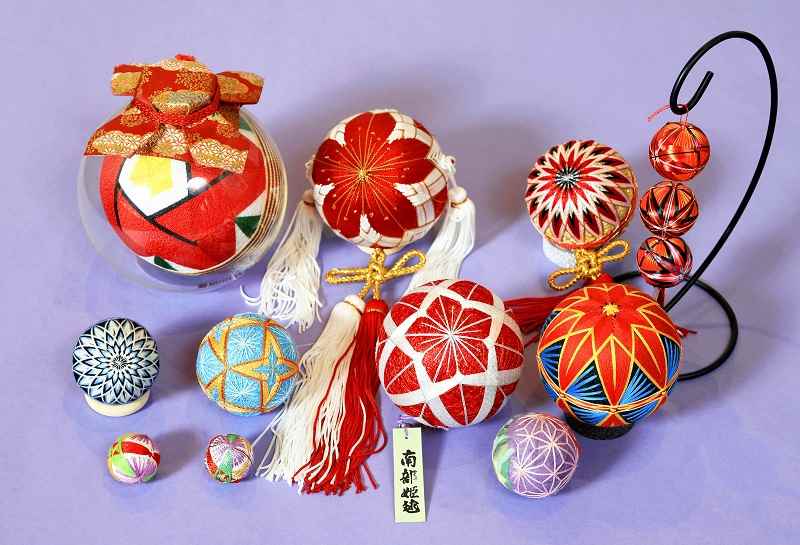
Echigawa Binzaiku Temari from Shiga Prefecture, back left, contained in a glass bottle, and Ryukyu Temari, center far-right, which features vivid vermilion and blue threads
10:50 JST, August 25, 2022
Temari balls are a Japanese craft with beautiful motifs such as flowers and geometric patterns, created by threads in various colors that are meticulously embroidered, stitched or wrapped by hand around their entire surface.
Temari made in different prefectures have unique motifs that contribute to their beauty. In recent years, very small ones have been used as earrings and other fashion accessories.
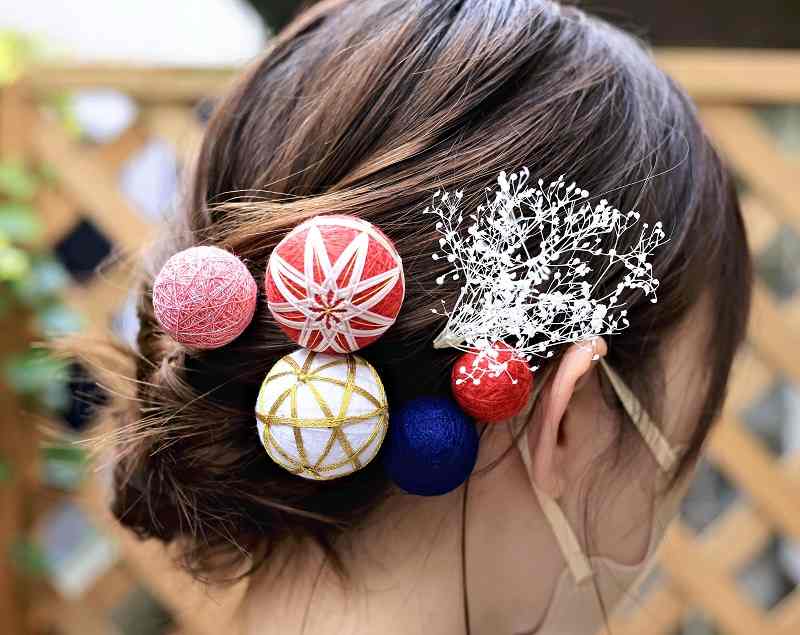
A kanzashi hairpin decorated with small geometric patterned temari balls.
To make temari, a ball-shaped base is covered with silk or cotton threads. When designing the patterns, careful color planning is essential. The attention to detail while working by hand is what gives the craft its appealing appearance and striking motifs.
Traditionally, temari were made to pray for children’s good health and were given as gifts on seasonal festivals and life milestones, such as weddings.
A variety of them are on display at Haretemari Kobo, a temari museum and atelier in Adachi Ward, Tokyo. “Each temari is made with special care and kindness. I can feel the affection of the person who made it stitch by stitch, thinking about the person who would receive it,” said Yuka Sato, 27, director of the museum. “They have warmth. Just looking at them makes me happy.”
Born in 1994, Sato is a native of Yurihonjo, Akita Prefecture, which is known for its history of making temari. She was captivated by their charm when she had a local craftsperson make a kanzashi hairpin with small temari to wear at her university’s graduation ceremony. After working for an information technology company, she studied temari culture and how to make them on her own at first and then in earnest from an artist in Yurihonjo.
Temari is said to have originated from kemari, a type of football game that became popular during the Heian period (794-late 12th century). Temari were widely used as a toy among commoners during the Edo period (1603-1867).
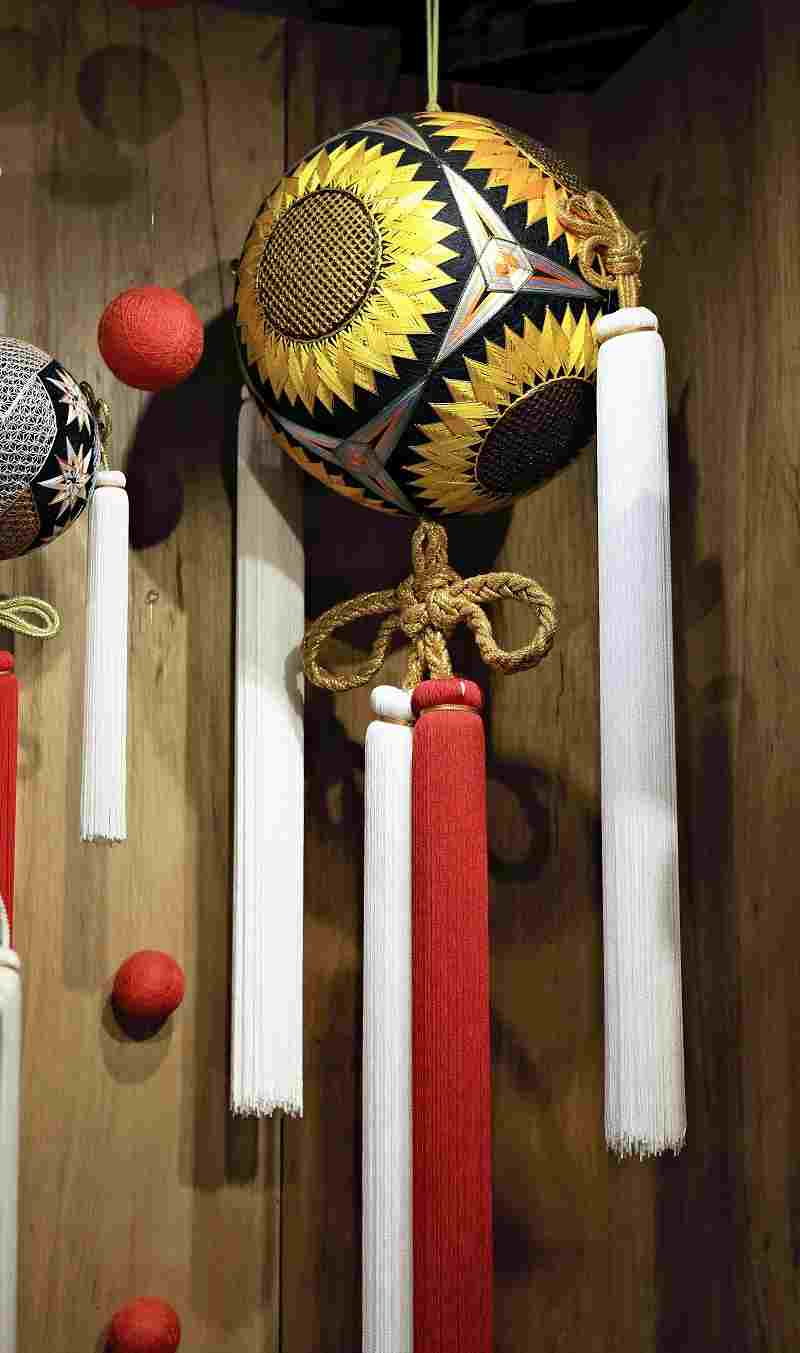
Honjo Gotenmari from Akita Prefecture with its characteristic tassels.
The tradition of temari as gifts and decorations has been passed down from generation to generation. However, production has gradually decreased due to a shortage of people willing to join the business. In fact, it is said that only a dozen kinds of the craft currently exist in Japan.
The temari museum displays these different types with its roughly 50 temari balls, showcasing their diversity. Honjo Gotenmari, produced in Akita Prefecture, has tassels attached to its bottom and two sides. Echigawa Binzaiku Temari, a product of Shiga Prefecture, is contained in a ball-shaped glass container, with an eye-catching geometric pattern. Matsue Washi Temari, from Shimane Prefecture, features stitches on Japanese washi paper pieces pasted onto the temari that exudes a gentle, heartwarming aura.
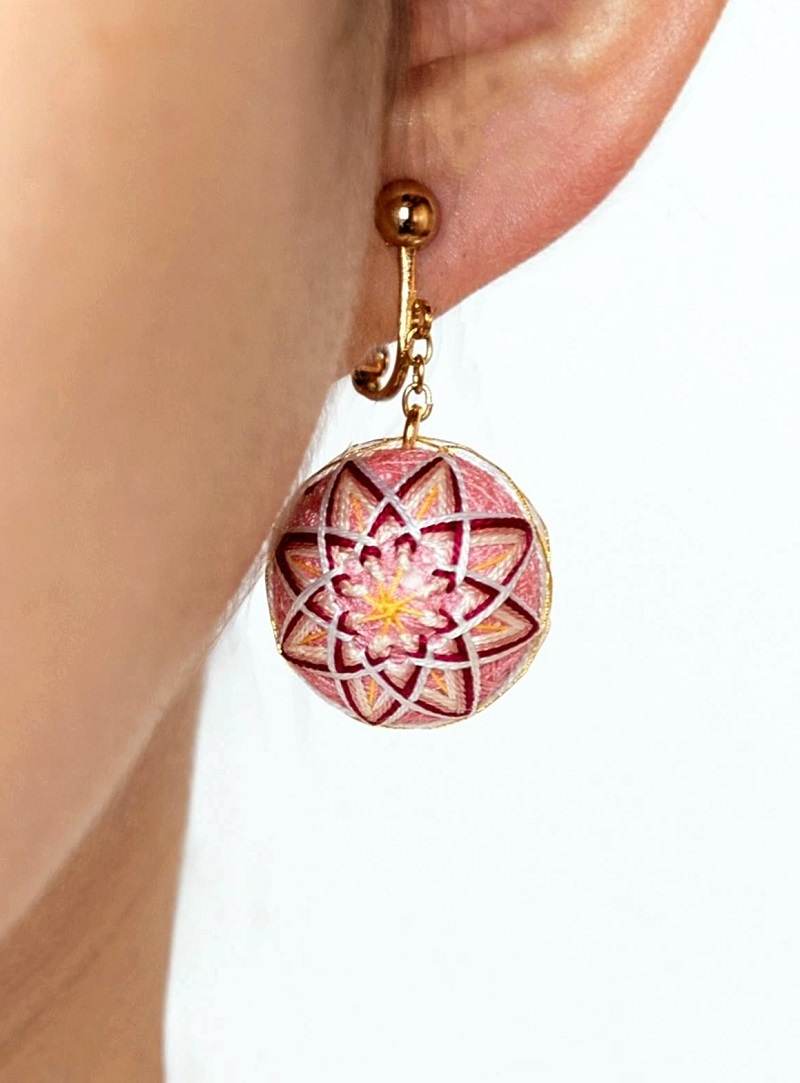
An earring decorated with a chrysanthemum motif temari.
In recent years, accessories and phone straps with small temari have become popular as novelty items among young people.
At Sato’s museum and atelier, she creates goods such as earrings, hair bands and bag charms. Patterns depicting flowers including cherry blossoms and chrysanthemums use light blue, pale pink, lemon yellow and other pastel colors.
Sato opened Haretemari Kobo in 2019 as a human resources company’s regional revitalization project. The museum and atelier also work on installations using temari for commercial facilities.
“I would like to convey the appeal of temari through accessories and other products, and to expand the circle of temari fans,” Sato said.
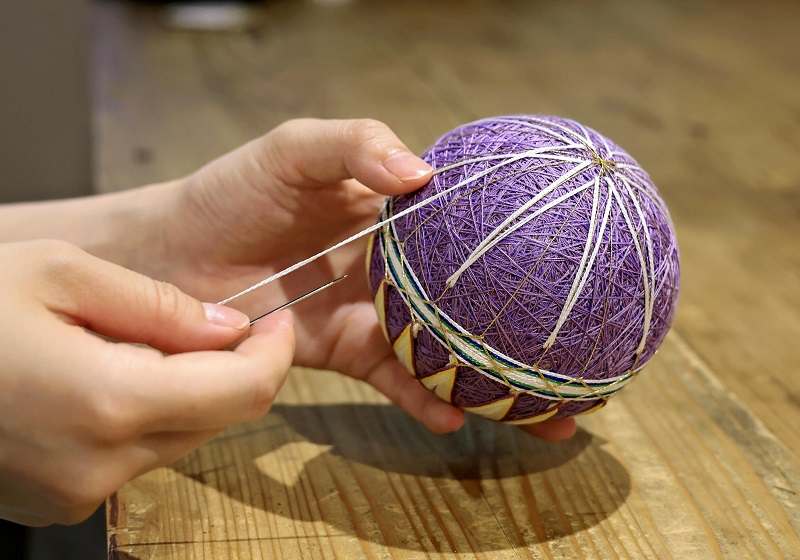
A ball-shaped base used to make temari
Kits for beginners
Temari have a central core, which is usually made of rice husks, cotton or Styrofoam. Yarn is then wound around the core to form a ball-shaped base. Next, the surface of the ball is marked at the top — the “north pole” when thought of as a globe — and at the south pole and equatorial points. It is further marked with reference lines, which indicate where stitches should be placed to depict patterns.
As it is hard to make a ball-shaped base from scratch, Sato recommends that beginners use a temari kit with a premade base. Her museum offers one that includes the base, needle and threads, as well as hands-on temari-making workshops.
In the Tokyo metropolitan area, lessons are given by some organizations, including Temari Bunko gallery in Tokyo, which is run by the Nihon Temari no Kai, an organization dedicated to preserving and promoting the temari tradition. People interested in the craft can also find books explaining how to make temari with text and illustrations.



